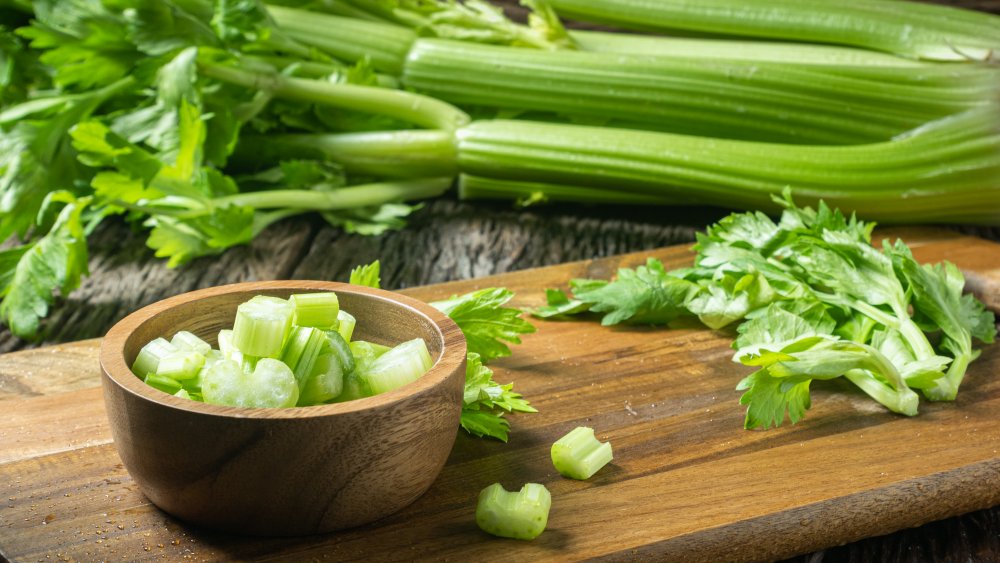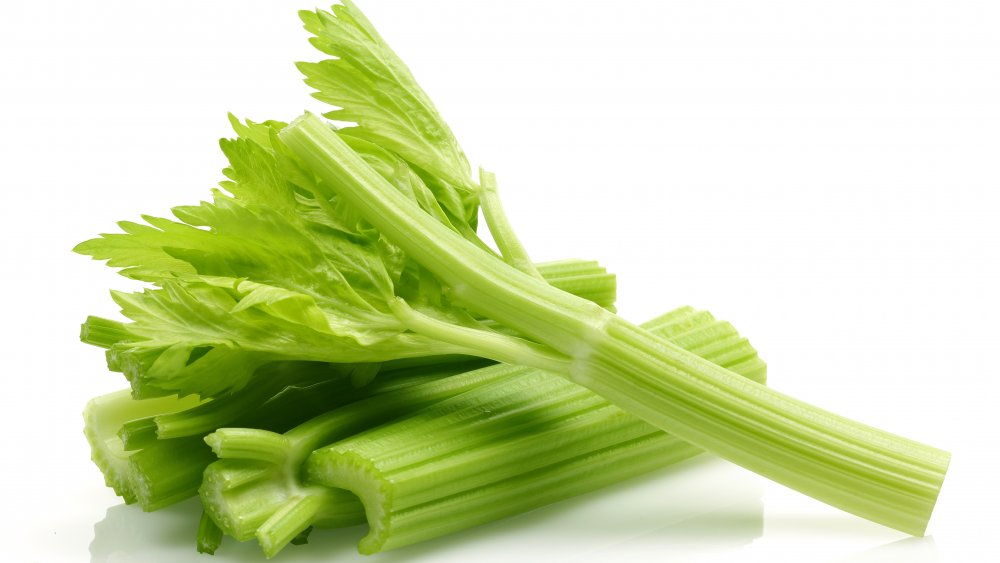Mistakes Everyone Makes With Celery
Most of us know celery is an ideal food for weight loss, containing minimal calories and carbohydrates while being full of both water and fiber (via Live Science). However, its benefits don't stop there; this marshland plant also has anti-inflammatory properties, and could even have mitigating effects on heartburn, high cholesterol, blood pressure, digestion, and possibly even cancer.
With so many potential benefits, the last thing you'd want is to unknowingly reduce the nutrients present in your produce. And, when it comes to celery, the way you store, cook, and even chop it up could dramatically reduce its nutrient density. So, to avoid letting all those phytonutrients, vitamins, and minerals go down the drain, here are a few tips to get the most out of your celery.
First things first, it's important to pick out fresh celery when you're at the market. Look for sturdy, upright stalks that don't bend or wilt when you pull on them gently (via Healthline). The leaves at the end of the stalks should be crisp and green; avoid any yellowing or browning leaves, since that indicates the celery isn't fresh.
How to store, chop, and cook celery without losing nutrients
Once you've bought your fresh celery, it's important to make sure it's really clean, so soak it in a pot of water for about 10-15 minutes, then rinse under some more running water to ensure all of the nasty pesticide residue has been removed (via Eat This, Not That). Then, resist the urge to chop it ahead of time. While it may be more convenient, pre-chopped celery that has been stored even just a few hours will already have lost valuable nutrients, so wait to chop until you're ready to cook, or just about to serve.
When it comes to cooking methods that won't decrease nutrient density, steaming is the way to go. Boiling or even blanching celery for just ten minutes leads to between 38 and 41 percent antioxidant loss while steaming for the same amount of time only causes between 1 and 17 percent antioxidant loss, per Live Science. Also, don't neglect the leaves, since that is where most of the plant's calcium, potassium, and vitamin C are located. Finally, the best way to ensure you're reaping the most benefits from celery is to consume it quickly; eat the leaves within a day or two (they're delicious in a soup or a salad, but don't remain fresh for long), and the stalks within five to seven days for maximum nutrients.

